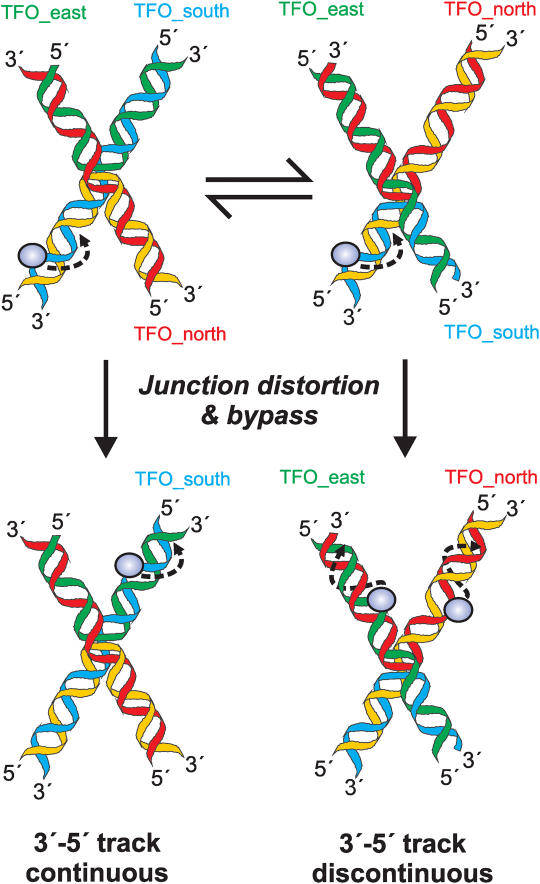Figure 6.
Before and after states of a dsDNA translocase during bypass of a branched junction. Schematics of the stacked-X conformers are based on the crystal structure of Ortiz–Lombardia et al. (13). Translocation of a dsDNA motor (blue circle) in a 3′–5′ direction towards the HJ occurs from the DNA arm containing the motor initiation site (blue/yellow strands). The black broken lines show the direction of motion. Upon reaching the junction, the motor will stall and, most likely, distort the DNA. Translocation will then continue on one of three tracks dependent upon the geometry of the branchpoint. The direction chosen by the motor reflects which strand is closest in space when the motor makes a forward step. As a simple example: In one stacked-X conformer (left-hand structures), the 3′–5′ translocated strand (blue) follows a continuous axial path approximating that found in B-form DNA. Here, forward steps by the motor favours translocation along the Southern arm; In the other conformer (right-hand structures), the 3′–5′ strand is kinked and folded-back and the translocated strand now follows a discontinuous path, coaxial with a strand from the Northern arm (red strand). Here, forward steps by the motor favours track jumping and translocation along either the Northern or Eastern arm (both possibilities shown on the same DNA).

